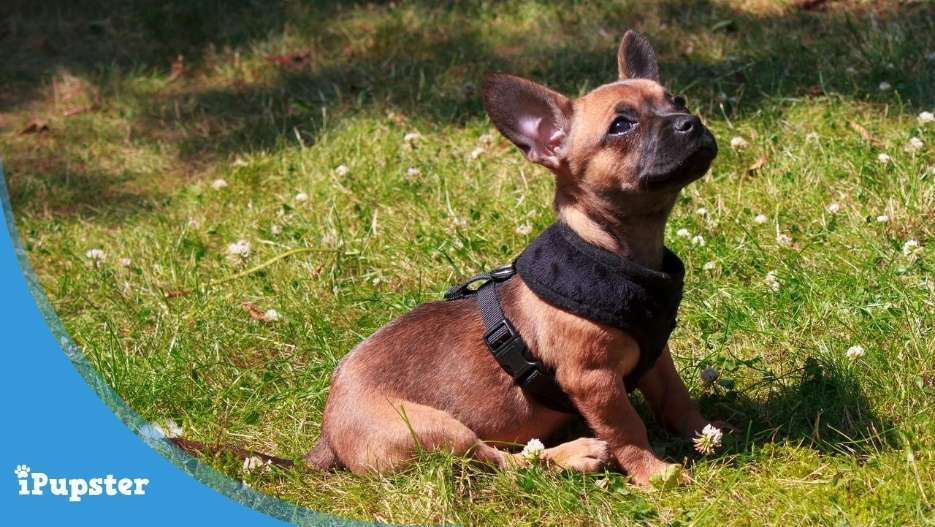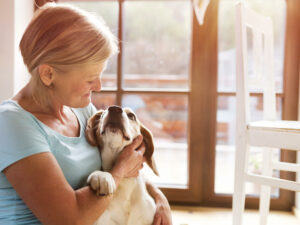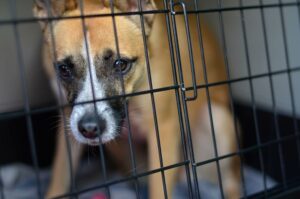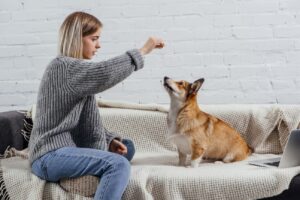Making sure your puppy is properly socialized is one of your first important tasks as a responsible dog owner. Early and consistent socialization is the hallmark of a happy, well-behaved dog.
This beginner’s guide to puppy socialization contains everything you need to know about socialization and how to do it properly.
What is Socialization?
Socialization is the strategic practice of introducing puppies (and older dogs) to different situations, mainly other people and animals, but also sights, sounds, and smells.
These introductions are important because to a puppy the world is an exciting but strange new place.
Being exposed to different stimuli will reduce the likelihood of your dog becoming aggressive or fearful when exposed to new and unfamiliar things.
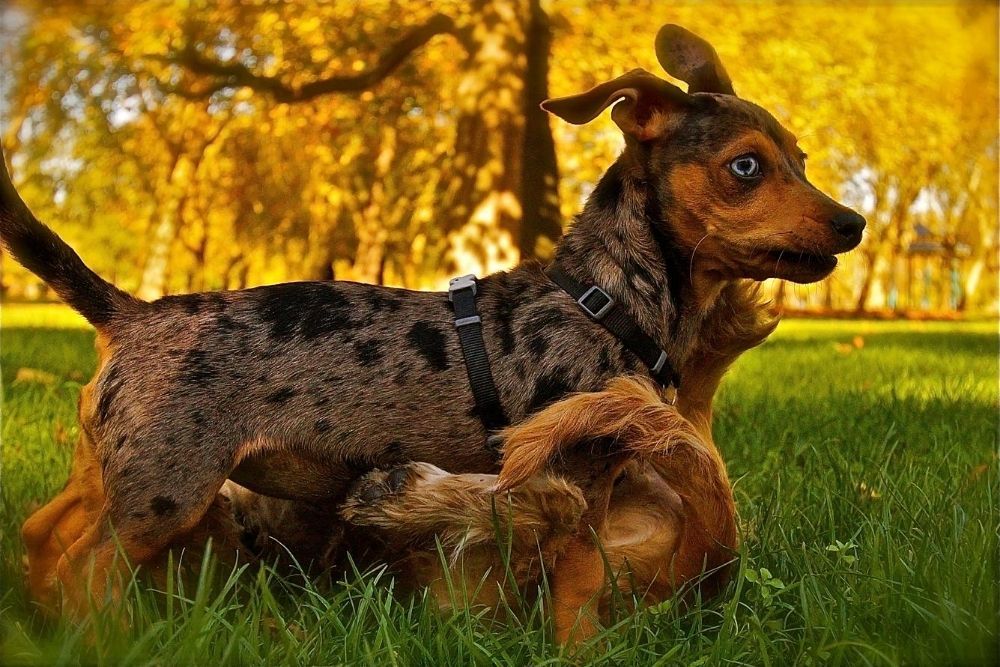
Did some socialization and distraction training. My first time experiencing play time with other doggies.
When is the Right Time?
In some small ways, the socialization process starts from the time puppies are born and throughout their lifetimes.
Experts from American Kettle Club (AKC) suggest that good socialization starts with the breeder and continues with the puppy’s new owner (you!).
Responsible breeders make sure that the dogs they breed are healthy and have a good temperaments.
They handle their puppies gently and start the process of introducing them to people and animals of different ages.
The first three months of development are so important that the American Veterinary Society of Animal Behavior (AVSAB) recommends starting socialization (with caution) before your puppy has received their full vaccines.
During this time your puppy’s desire for stimulation and connection outweighs their fear of the unknown.
According to dog trainer Kim Greco, owner of Paws & Possibilities another critical window for socialization occurs between 8 to 16 weeks and shapes how your dog will behave as an adult.
It’s very important that you try to expose your new puppy to as many sights, sounds, and smells as possible during this time.
Is It Too Late?
Right now some readers might be wondering, “What if I missed the right time to socialize my dog?”
In some situations you may realize that you missed the critical socialization window with your dog.
It could be because you adopted them when they were an adult or didn’t know much about socialization when you got them as a puppy.
It’s not too late for these dogs.
Slowly reintroduce them to different sights, sounds, and smells.
Supervise your older dog carefully during socialization and use extra positive reinforcement to help them overcome their hesitation towards new things.
In more difficult cases, like dogs who were abused or are very aggressive/fearful, you may need guidance from a veterinarian or animal behaviorist.
Why Socialization is Very Important?
Socialization is very important because lack of socialization and improper socialization often lead to behavior problems for dogs later in life.
According to AVSAB socialization is vital because:
Behavioral issues, not infectious diseases, are the number one cause of death for dogs under three years of age.
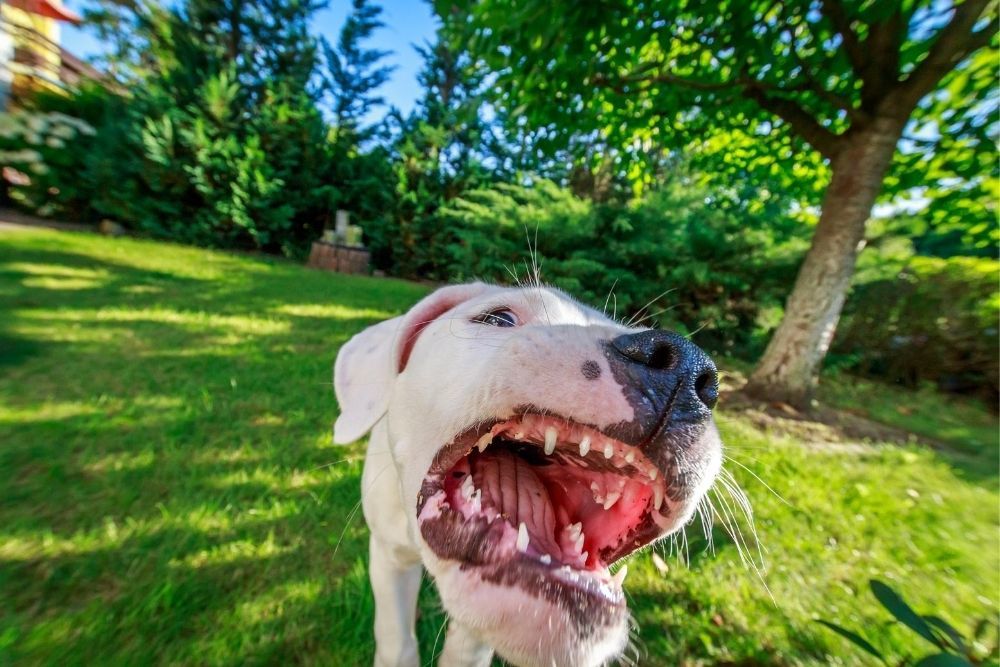
Early socialization helps prevent your dog from having issues with anxiety/reactivity around other dogs and also new people.
Factors to Consider During Socialization
It’s important not to just throw your puppy into a stressful situation without support.
For socialization to work, you need to be present and invested in the process.
If you’re not paying attention and your dog becomes overwhelmed, they could bite someone or try to run away and get hurt.
When planning how you will socialize your puppy, the first thing you should consider is their temperament and personality.
Most puppies are excitable and playful, with their tails wagging and eager to meet new animals and people. But that’s not always the case.
Some pups are shyer than others, timid even. They might cower behind their owner’s legs when someone new comes over or they hear a loud sound that’s new to them.
For these puppies, socialization happens a little differently.
Take note of your dog’s behavior when they’re approaching something with curiosity vs. how they look when they’re retreating from something that makes them scared or nervous.
Note other body language indicators you can look out for during socialization sessions that will tell you how your pup is feeling.
For nervous dogs, use gradual exposure to the things they’re afraid or unsure of along with a lot of positive reinforcement.
Repeated exposure, referred to as habituation, is another important element of socialization. The more your dog has good experiences around things they are afraid of, the less afraid (and more comfortable) they will become.
Hot Tip: Here are the best natural and healthy puppy reward training treats to help during socialization.
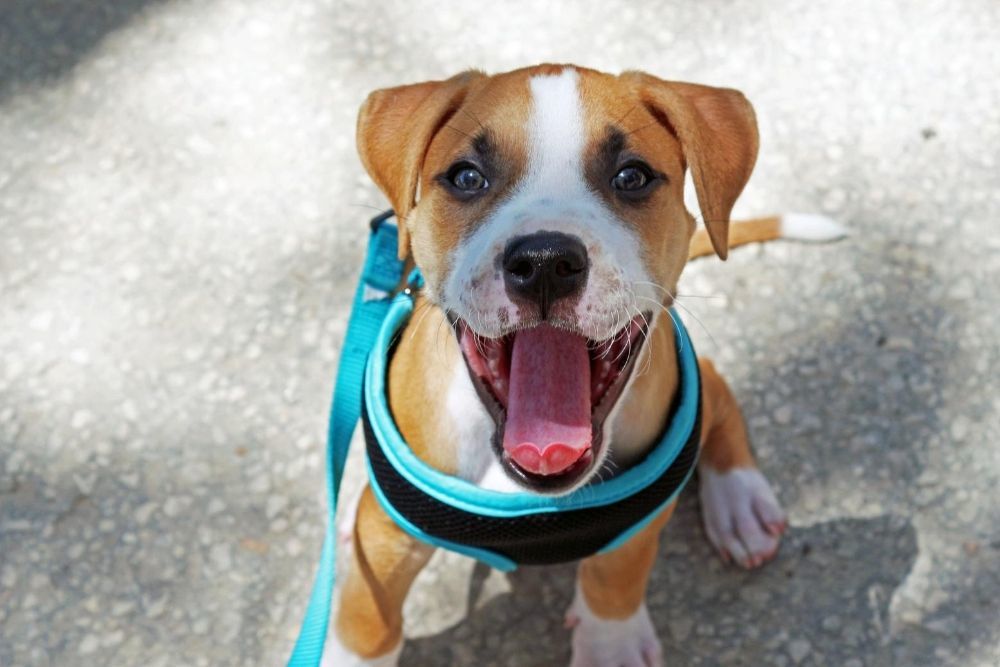
Pitbull Snitch is one courageous lad. He’s walking to the dog park, greeting friends, and meeting dogs bigger than he. He’s even learning some great commands.
The How
1. Use Positive Reinforcement
When socializing your dog remember to keep these experiences as positive as possible.
By positive reinforcement, we are usually referring to treats and praise, but every dog is different.
Think of what motivates your dog. If your dog turns its nose up at treats but loves to play, you could use their favorite toy to reinforce good behavior.
When your dog eagerly and calmly approaches a new situation make sure you give treats and praise them!
It won’t take long for your dog to realize that good things happen when they’re exposed to new people and places.
The same principle goes for timid dogs. But instead of getting new people to come right up to a shy dog, you might give treats and praise for playing with people close by.
Take Note
There’s always the chance that something unexpected will happen, so if your dog does have a negative experience don’t sweat it. Just do what you can to be prepared and react quickly if your dog is spooked.
2. Wide Exposure
If you want your puppy to be really well socialized you need to be prepared for a long (but fun) socialization process.
Socialization DOES NOT happen in a day.
You can’t introduce your dog to something new once and expect them to be okay with that thing forever.
Either make or download a list of as many new and varied experiences as possible.
You want your dog to be exposed to kids, elderly people, people with canes, in wheelchairs, bikes, cars, trucks, trains, grass, sand, sirens, loud music, etc.
When you’re going over your list you may also want to consider how stimulating these experiences will be in relation to your dog’s temperament.
If your dog is more timid, save potentially overwhelming experiences (like a trip to a festival or crowded market) for a much later when your dog is comfortable around strangers.
We know early socialization is important, but what are the most crucial things to expose your youngster to?
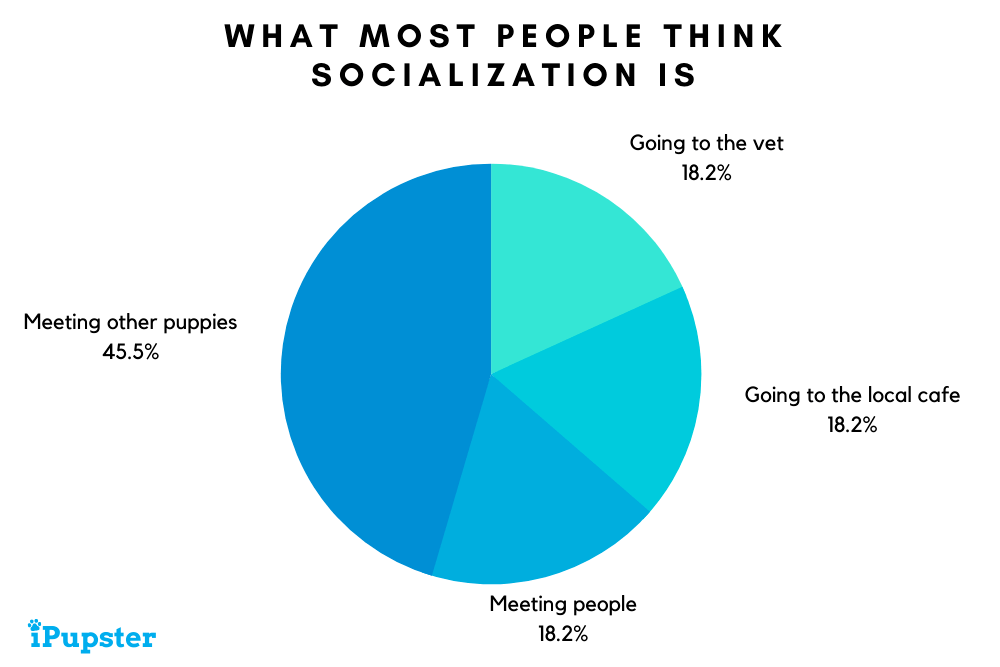
It might not be what you expected!
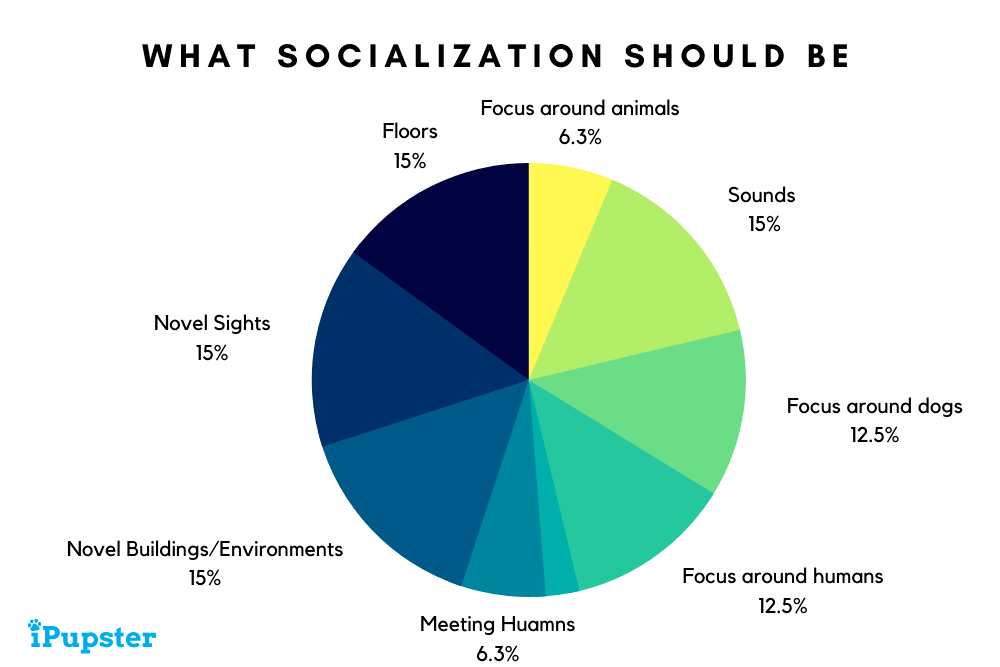
And remember, good socialization isn't just about exposure - your goal should be to make your pup's experiences positive and easy!
3. It's a Family Affair
Socialization should not be a one-person job, unless you live alone. For your efforts to be successful, it’s important that each family member gets involved and that you’re all on the same page.
Taking turns socializing your new puppy will help your pup get used to being with each member of the family.
It gives family members a chance to bond with the puppy and work on basic commands together. It also pushes your pup out of their comfort zone because they know they might come across something new no matter who they’re with.
To make it fun, each family member can keep track of how many new experiences they expose the puppy to or make everyone responsible with coming up with new ideas for the puppy to be exposed to each day or week.
4. Take Puppy Classes
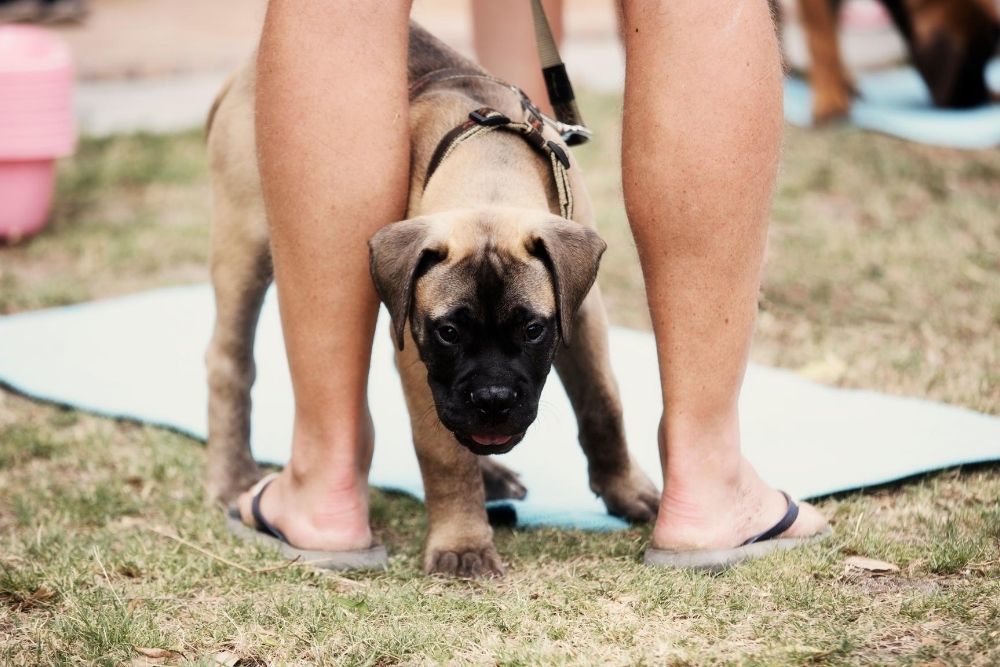
Training classes. UGH. So, I had a good first day, lots of playing, commands and treats. Pretty sure I've nearly got the socializing training bit down already!
Puppy classes are great because they not only teach your puppy basic commands, but also expose them to new people and other puppies.
Before you sign up for puppy classes, there are two important things that you need to know:
- To attend puppy classes, your pup will need at least their first vaccinations. The minimum that is usually required are the Distemper-Adenovirus, Parvo, and Bordetella vaccines.
- Puppy classes are not designed to address abnormal behaviors such as profound fears, phobias, aggression, and excessive reactivity.
Check out this related article: A Pet Parent’s Guide to Dog Vaccinations: What They Need, When and Why
All puppies can benefit from a well-run puppy class, but especially for inexperienced owners these classes help take some of the guesswork out of socializing your puppy.
Puppy classes have skilled trainers to make sure everyone is safe and the process runs smoothly, so if there are some minor problem behaviors they can be dealt with.
This is somewhat of an advantage of puppy classes over going to a dog park with no professional mediation.
5. Get Your Pup Certified
There are several different certifications you can go for to show that your dog can follow commands and is generally well-behaved.
A few examples of certifications provided by the AKC are:
- S.T.A.R. Puppy
- Canine Good Citizen (CGC)
- Community Canine
- Urban CGC
These certifications require your puppy or dog to pass certain tests and encourage owners to take responsibility of their pet’s behavior.
6. Let Your Pup Set The Pace
Like we mentioned earlier, it’s important that you take things slow when it comes to socializing your puppy.
See how your pup reacts when you start the socialization process and set the pace from there.
Is your puppy typically full of tail-wagging fun and ready for anything?
If you answered yes, your puppy can probably handle a faster paced socialization schedule with a little less caution. You still want to start relatively slow to build their confidence.
If you’ve got a scaredy-pup on your hands you’ll probably need to put the brakes on your socialization schedule and come up with a game plan that works for them.
A good way to handle nervous pups is to use baby steps (a.k.a. gradual exposure) that they can safely conquer to build confidence before taking on bigger challenges.
Pay special attention to your dog’s body language, like when their tail is down and tense, ears are down, etc. and adjust accordingly.
7. When You Go Out, Bring Your Puppy With You
Leaving your new puppy alone at home when you go out can lead to separation anxiety and does not help them learn socialization skills.
You might be worried that your dog won’t act properly in public, but it’s important to trust that they want to learn and please you.
Take you pup along on your daily coffee run, for walks to the park, to a friend’s house, or the pet store.
Dogs make great companions and many love being around people.
Making your puppy your official sidekick will benefit you both and set a strong foundation for your relationship together.
Keep in mind that before your dog goes to the dog park you will need to get them their full vaccinations and wait approximately 7 to 10 days.
This is important for their safety and the safety of other dogs at the park.
Hot Tip: Struggling with housebreaking? Use an indoor dog potty during house-training.
Final Word
For some owners, bringing their puppy everywhere comes naturally. Other owners find the idea of socializing their new pup daunting.
This beginner's guide to socializing your puppy gives you the strategies and insight needed to socialize your puppy the right way, the first time, resulting in a well-behaved and beloved family member.

